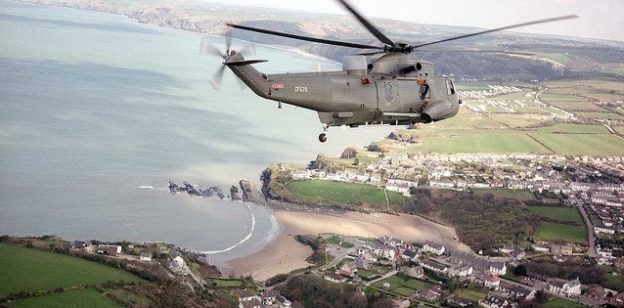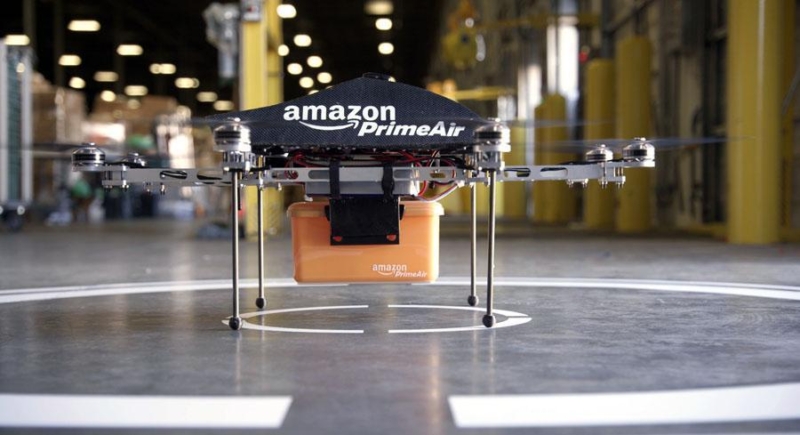Guidance on the safe use of drones in UK airspace
14 November 2014The recreational and commercial use of small drones in the UK is on the rise.
These small drones, or Remotely Piloted Aircraft Systems (RPAS) as they are formally known, are highly capable aircraft that give their operators immediate access to the skies and a chance to experience a different and unique perspective of the environment around them.
You can easily see why they are an attractive purchase.
It’s also no surprise then that there has been an increase in the number of incidents involving RPAS. The majority relate to their use near restricted military sites or at public events such as football matches or music festivals. Alarmingly, incidents are now also being reported relating to RPAS being flown in the vicinity of airfields, or at altitudes with other manned aircraft.

Image via Flickr by kevlar
The commercial use of RPAS is tightly regulated with specific qualifications and permissions required to operate, however the recreational use of RPAS is a completely different challenge. It is very easy to buy and use one without any training or knowledge of the airspace rules, highlighting the need to support recreational operators in understanding their responsibilities as airspace users.
Operators should be aware that any RPAS less than 20kg is actually classified in the UK Air Navigation Order (ANO) as a ‘Small Unmanned Aircraft’ and is subject to rules and regulations just like manned aircraft. The rules determine where drones can and can’t be flown, height and distance restrictions and importantly the responsibilities of the operator. Currently, for Small Unmanned Aircraft, air traffic control is reliant on the operator’s adherence to these rules to ensure safe distances between the manned and unmanned world of aviation.
The challenge to air traffic control is that some RPAS are too small to be detected using traditional surveillance systems like radar. We therefore rely on RPAS operators contacting us so we can give them the information they need to decide whether their planned flight is in a location that might be hazardous to other aircraft.
If you’re flying within controlled airspace, then RPAS operators can get in touch with us via the NSF Process. This is required if your RPAS is more than 7kg, alternatively if it’s less than 7kg, contact details of the relevant local air traffic services unit can be found in the AD – Aerodrome – section of the AIP.
If you’re thinking of buying an RPAS, big or small, make sure you check out the guidance on the safe use of Small Unmanned Aircraft at www.caa.co.uk/uas. The CAA has also produced a quick-start guide to the rules of flying unmanned aircraft.
Finally, to learn more about the airspace you intend to fly in, SkyDemon Light is a free online flight planning tool for General Aviation pilots, but is a great starting point for RPAS operators too.
Happy – and safe – flying!
[Header image via Flickr by trotaparamos]
Comments
Please respect our commenting policy and guidelines when posting on this website.




17.11.2014
10:23
Paul Harling
Thats our clip, that is 🙂
17.11.2014
13:24
Eamonn Riley
James
How did you train to becoem an RPAS (Remotely Piloted Aircraft System) Operator?
28.12.2014
02:38
Gav
Ironically, the drone pictured (DJI Phantom 2) comes pre-loaded with what is effectively an “awareness” of civilian airfields all over the world and will refuse to fly into ICAO cat A or B airspace at any or certain altitudes respectively, so it’s good to see that manufacturers of out-of-the-box RPAS solutions are taking practical measures to ensure their products do not end up as front page news at the hands of folks who never even stopped to consider their fellow airspace users.
Sadly it does seem only a matter of time before all hobbyists will be forced to undergo the same lengthy and expensive certification process via the CAA as the folks who fly RPAS for a living, the number of near-misses being recorded is going up and it seems there’s no practical way of keeping airprox ratings to a minimum without slamming some weighty regulations and certification on anyone operating RPAS meeting certain weight and range criteria.
05.05.2015
16:25
Glen Urban
Can you be more specific on where to find the “contact details of the relevant local air traffic services unit”? I followed the link but after looking at numerous pages on the web site I still haven’t found the contact details.
27.07.2015
12:05
James Harvey
Small RPAS Safety Lead@Glen
Hi Glen, thanks for your comment. If you navigate to http://www.nats-uk.ead-it.com/public/index.php.html and click IAIP then on the left hand navigation bar there is link to “Aerodrome Index – Specific” this takes you to a list of airfields. Each airfield has a “Textual Data” PDF which contains contact details for ATC. Hope that helps.
James
12:05
James Harvey
Small RPAS Safety Lead06.12.2015
02:22
Craig
Unfortunately SkyDemon uses Microsoft’s deprecated Silverlight framework to display (or not in my case) information. Is there an equivalent online resource that uses standard (i.e. non proprietary) web formatting?
Thanks
29.06.2016
21:40
JET Business
Thanks for nice information. We like it very much. We are also working for flight planning companies.